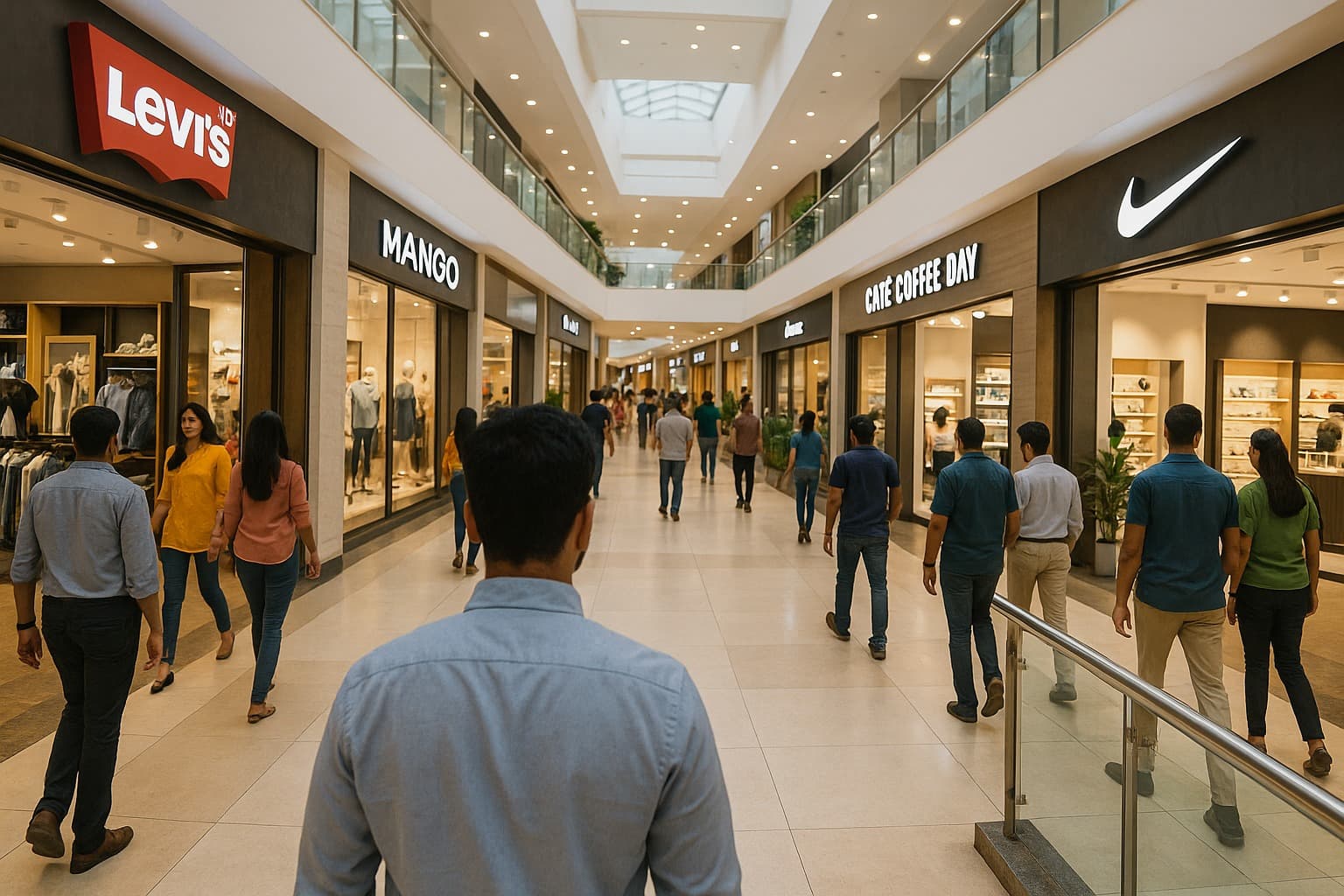Commercial Real Estate Demand Post-Pandemic: Trends and Opportunities in India
Summary
India's commercial real estate is rebounding post-pandemic, driven by hybrid work, flexible spaces, and evolving retail. Tier-2 cities are emerging hubs, while technology and adaptable strategies are key for investors and tenants.

Commercial Real Estate Demand Post-Pandemic
The pandemic changed almost every facet of our lives, and commercial real estate (CRE) was no exception. For decades, India’s office and retail spaces had followed predictable patterns: companies leased floors in business districts, retailers secured prime city locations, and developers built accordingly. Then COVID-19 arrived, forcing lockdowns, remote work, and temporary closures. For a moment, it seemed the commercial property sector might face a permanent downturn. But as India gradually reopened, CRE demand is not only rebounding—it’s evolving. Post-pandemic, the sector is witnessing new trends, shifting demands, and exciting opportunities for investors and tenants alike.
The Immediate Pandemic Impact
During the height of the pandemic, office spaces emptied almost overnight. Companies adopted work-from-home policies, many permanently reducing their real estate footprint. Retail stores, particularly in malls and shopping districts, struggled with closures, social distancing norms, and declining footfalls. Demand for commercial leasing slowed dramatically, transactions stalled, and rents softened in many cities. Developers faced delays in new projects, and investor sentiment dipped.
Yet, the slowdown also created opportunities. Businesses began rethinking their office layouts, prioritizing flexibility, safety, and technology integration. Retailers explored omnichannel models, blending physical stores with online presence. Investors, observing lower prices, began identifying prime locations with long-term growth potential. The pandemic, while disruptive, acted as a catalyst for innovation and transformation in CRE.
Office Leasing Trends Post-Pandemic
One of the most significant changes post-pandemic has been in office leasing. Many companies, especially tech, IT, and BFSI sectors, are embracing hybrid work models. Employees split their time between home and office, creating a demand for smaller, more flexible office spaces. Companies are increasingly looking for co-working spaces, shared offices, and plug-and-play solutions rather than large, long-term leases.
Metro cities like Mumbai, Bangalore, Hyderabad, and Pune are leading this shift. For instance, tech hubs in Bangalore and Hyderabad are witnessing a surge in flexible workspace demand, while Mumbai’s Bandra Kurla Complex (BKC) and Lower Parel continue to attract premium tenants seeking centrally located, state-of-the-art offices. Tenants now prioritize location, amenities, and digital infrastructure, ensuring their spaces are future-ready.
Retail Recovery and Transformation
Retail commercial real estate is also undergoing a transformation. While traditional shopping malls faced temporary setbacks, prime retail locations in high-footfall areas are rebounding as consumers return. However, post-pandemic demand is more nuanced. Retailers are focusing on experiential shopping, convenience stores, and smaller footprint outlets integrated with e-commerce logistics.

Food and beverage chains, wellness centers, and service-oriented businesses are driving leasing demand in commercial properties. Retailers are also emphasizing safety and hygiene standards in their premises, influencing the choice of properties. Investors and developers who adapt to this evolving retail demand are finding higher occupancy rates and resilient rental income streams.
Growth of Co-Working and Flexible Spaces
Co-working spaces were already gaining popularity before COVID-19, but the pandemic accelerated their adoption. Companies, wary of long-term leases and large office overheads, now prefer flexible arrangements where space can be scaled up or down based on business needs.
Major co-working operators in India, like WeWork, Awfis, and 91springboard, are expanding post-pandemic, particularly in metros and tier-2 cities with growing corporate hubs. Co-working spaces offer modern amenities, networking opportunities, and technological infrastructure, making them attractive to startups, SMEs, and even multinational companies. Post-pandemic CRE growth is closely tied to the resurgence of co-working models.
Tier-2 Cities Emerging as CRE Hubs
While metro cities continue to dominate, tier-2 cities like Pune, Noida, Gurgaon, and Ahmedabad are witnessing significant CRE demand growth. Affordable rental rates, improved infrastructure, and availability of skilled labor are attracting companies to relocate or expand operations in these cities.
Post-pandemic, businesses are keen to reduce operational costs without compromising on facilities. Tier-2 cities offer a perfect balance: modern office spaces, lower lease costs, and access to talent. Retailers are also exploring smaller cities with untapped markets, creating new investment opportunities in both office and retail real estate.
Investor Perspective: CRE as a Resilient Asset
Investors are closely monitoring the CRE sector post-pandemic. While short-term uncertainty exists, long-term growth prospects remain strong. Offices, co-working spaces, and retail properties in prime locations offer attractive rental yields. Moreover, flexible lease models, shorter lease periods, and hybrid work adoption ensure higher occupancy and reduced risk.
Real estate experts suggest that CRE investment now requires careful location analysis, tenant profiling, and adaptability to hybrid work trends. Properties near IT hubs, business districts, and retail clusters are poised for consistent demand. Institutional investors are increasingly entering the market, recognizing the sector’s resilience and potential for stable returns.
Technology Driving CRE Transformation
Technology is playing a key role in post-pandemic commercial real estate. Property management platforms, virtual tours, AI-powered analytics, and smart building infrastructure are reshaping tenant experiences. Companies now demand high-speed internet, advanced security, energy-efficient systems, and contactless facilities. Developers adopting technology solutions attract premium tenants, ensuring higher rental income and sustained occupancy.
Moreover, technology enables better portfolio management for investors. Real-time data on occupancy, lease agreements, tenant satisfaction, and maintenance ensures efficient operations and strategic decision-making. Post-pandemic CRE growth is closely tied to technology adoption, making digital infrastructure a must-have in modern commercial properties.

Challenges and Considerations
Despite a strong rebound, post-pandemic CRE faces certain challenges:
Shifting Work Patterns: Hybrid and remote work may reduce long-term demand for traditional office space.
Rental Pressure: While prime locations remain robust, secondary markets may face softer rents.
Regulatory Framework: Developers and investors must navigate zoning regulations, lease laws, and tax implications.
Health and Safety: Maintaining COVID-19 safety norms, ventilation, and hygiene standards remains essential.
However, with thoughtful planning, adaptability, and focus on prime locations, CRE demand is expected to sustain long-term growth.
The Future Outlook
The post-pandemic commercial real estate market in India is resilient, evolving, and opportunity-rich. Office leasing will increasingly favor flexible, tech-enabled, and well-located spaces. Retail properties will thrive in experiential, convenience-focused, and hybrid models. Tier-2 cities will continue to emerge as attractive CRE destinations. Investors who understand tenant needs, integrate technology, and anticipate changing work patterns will capitalize on this growth.
As India’s economy rebounds, businesses expand, and urban migration continues, commercial real estate will play a pivotal role in supporting employment, corporate operations, and retail activity. 2025 is expected to mark a year where CRE not only recovers but evolves into a more dynamic, adaptive, and investment-friendly sector.
Summary (100 Words)
Post-pandemic commercial real estate in India is witnessing a strong rebound, driven by hybrid work models, co-working spaces, and evolving retail demand. Metro cities remain prime hubs, while tier-2 cities like Pune and Noida are emerging as attractive alternatives. Companies prefer flexible, tech-enabled office spaces, and retailers focus on experiential, smaller-footprint outlets. Investors benefit from higher rental yields, predictable occupancy, and scalable co-working models. Technology enhances property management and tenant experiences. Despite challenges such as changing work patterns and regulatory considerations, India’s CRE sector is poised for sustainable growth, redefining the urban commercial landscape in 2025.
